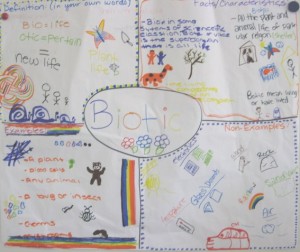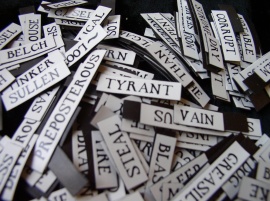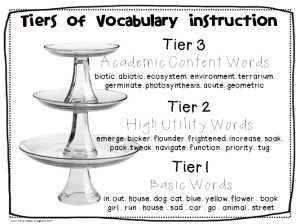“The limits of my language are the limits of my world.” -Ludwig Wittgenstein
As evidenced by the trend across our entire region, our students’ reading levels (according to Gates) are being held back by vocabulary even more than comprehension. This makes sense given our students’ experience gaps in a majority rural region.
Goal: Students OWN in their writing and speaking over 120 new words this year.
How Do I Choose Words to Teach?
Consider the 3 Tier Vocabulary Paradigm from Bringing Words to Life, to the left. We want to deeply teach TIER 2 words that we pull from the on-grade-level-texts we’re reading as a class. We want students to own and use these words in their CFQs, essays, memoirs, poetry, and in-class/ at-home discussions.
- Tier 1: Words acquired through every day speech, usually learned in the early grades
- Tier 2: Academic words that appear across all types of text. These are often precise words that are used by the author in place of common words. (i.e. gallop instead of run). They change meaning with use.
- Tier 3: Domain specific words” that are specifically tied to content. (i.e. Constitution, lava) These are typically the types of vocabulary words that are included in glossaries, highlighted in textbooks and address by teachers. They are considered difficult words important to understanding content.
The Common Core suggests that it’s important to target specific instruction on Tier 2 and and Tier 3 vocabulary words to help students develop deep understanding that cannot be acquired through independent reading. Since Tier 3 words are typically targeted in content specific instruction, it’s particularly important and challenging to identify and target Tier 2 words, since they appear across all disciplines. The task at hand, then, appears to be identifying the Tier 2 words and finding effective instructional strategies to support acquisition of those words.
Solutions/ Strategies/ Resources to help you achieve this vocabulary growth with your students:
- Uncommon Charter Network’s Approach to Vocabulary Instruction: Word of the Day
- PPT of Explanation
- Sample Student-Facing PPT
- Student-Facing Template
 Sample Words for Connotation-Spectrum Word Wall
Sample Words for Connotation-Spectrum Word Wall- Sample Vocabulary Quiz, 2nd Half Aligned to MCT2
- Word of the Day Script
- Total Physical Response Vocabulary Instruction: Using hand signals and body movements to help students deeply remember word meanings.
- Ashley Lamica (’12 ELA CM) used this method to teach her students character traits at the beginning of the school year.
- This teacher on YouTube uses this method within every unit.
- Other routines to celebrate and reinforce accurate, vibrant vocabulary acquisition:
- Sarah Rudolph & Jessi Caldwell (both ’13 ELA) recommend using a Frayer Model, like the one linked or the image to the right to facilitate more student ownership of words.
9 Things Every Teacher Should Know About Words & Vocabulary Instruction, from The International Reading Association:
- Words are cool! English is a huge and unique collection of words. There are words added to the dictionary every year! See how to invest your students in this in the above linked article.
- The rules of English are simple & consistent compared to other languages.
- Vocabulary proficiency only grows from students using words orally and in their writing.
- Words are learned when students associate the new with the known. See examples of how to do this in the linked article!
- 70% of the most frequently used words have multiple meanings.
- Meanings of 60% of multisyllablic words can be inferred by analyzing word parts.
- Direct instruction of vocabulary influences comprehension more than anything else.
- Teaching fewer words well is more effective than teaching several words in a cursory way.
- Effective teachers display an attitude of excitement and interest in words throughout the year. (i.e. build a year-long connotation word wall to use words learned forever, give class points for students who use vocabulary words in their spoken class conversations!)



Pingback: Vocabulary: The Limits of My Language Are the Limits of My World | tfa delta ela·